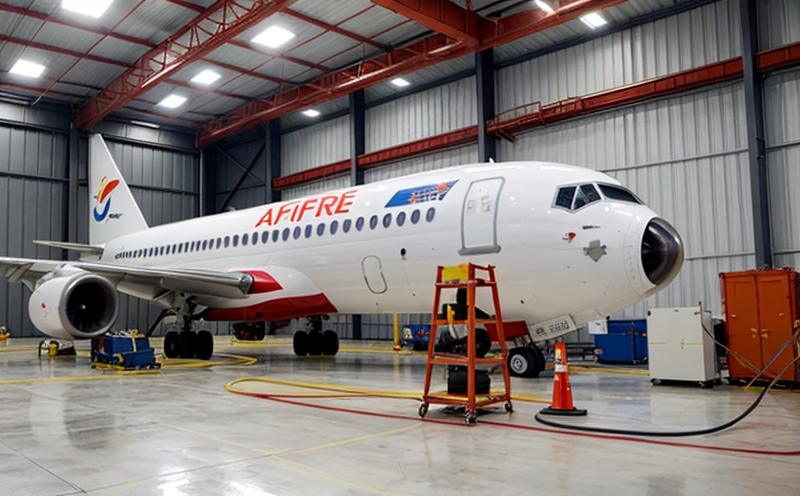Fire Behavior Testing of Aircraft Galley Appliances
The fire behavior testing of aircraft galley appliances is a critical component in ensuring the safety and reliability of commercial aviation. This testing ensures that galley equipment adheres to stringent international standards, reducing the risk of in-flight fires which can have catastrophic consequences. The process involves rigorous evaluation of various parameters, including heat release rates, flame spread characteristics, and smoke production levels under controlled laboratory conditions.
Aerospace fire safety testing focuses on preventing potential hazards by identifying materials and components that may contribute to a fire outbreak during operation or maintenance. For galley appliances specifically, the testing assesses how these devices perform when exposed to thermal stresses typical of an aircraft environment. This includes simulating real-world conditions such as high temperatures, electrical malfunctions, and prolonged use.
The primary goal is to ensure that any flame generated by the appliance extinguishes rapidly without spreading beyond the intended area. Compliance with relevant standards like ISO 6947 (Fire tests - Determination of flammability in a vertical rod configuration) provides assurance that manufacturers meet industry benchmarks for safety and performance.
During testing, specimens are subjected to multiple cycles of heating and cooling to mimic actual operational scenarios aboard aircraft. Specimens may include cooking surfaces, ovens, microwaves, refrigerators, and other components integral to galley operations. Each cycle measures key indicators such as peak heat release rate (PHRR), oxygen consumption index (OCI), and smoke density.
It's crucial to note that testing methods vary depending on the specific appliance type and its functional requirements within the aircraft cabin. For instance, ovens require more intense thermal exposure due to their high power output compared to small appliances like coffee makers. Proper specimen preparation is essential; this involves cleaning all surfaces, ensuring consistent thickness across samples, and accounting for any internal components that could affect flame behavior.
Instrumentation plays a vital role in accurately measuring the properties being evaluated during testing. Advanced optical sensors capture detailed images of flames spreading over time, while thermocouples provide precise temperature readings throughout each experiment. These data points form the basis for determining compliance with specified limits outlined by regulatory bodies such as the Federal Aviation Administration (FAA).
The results of these tests are then compiled into comprehensive reports detailing individual performance metrics alongside comparisons against established thresholds. This information helps manufacturers make informed decisions about design improvements or material substitutions aimed at enhancing overall safety.
Applied Standards
| Standard | Description |
|---|---|
| ISO 6947:1985(E) | Fire tests - Determination of flammability in a vertical rod configuration. |
| EN 302-2:2006 | Aircraft galley equipment - Part 2: Fire safety requirements. |
| ASTM E1655-17 | Standard test method for measurement of flame spread and burning characteristics of materials using a vertical tunnel apparatus with an inclined specimen. |
International Acceptance and Recognition
The fire behavior testing conducted under these standards enjoys widespread acceptance across major aviation authorities worldwide. Regulatory compliance is essential for manufacturers who wish to introduce new products into global markets, ensuring interoperability between different aircraft types and operators.
Aerospace fire safety regulations are harmonized through organizations like the International Civil Aviation Organization (ICAO), which promotes uniformity in standards governing all aspects of civil aviation operations. By adhering to these internationally recognized benchmarks, manufacturers can confidently demonstrate their commitment to passenger safety while also facilitating smoother regulatory processes during certification procedures.
Notably, many leading airlines and maintenance organizations specify compliance with specific tests as part of their procurement criteria for new equipment installations. This practice underscores the importance placed on rigorous testing in maintaining high standards within the aviation industry.
Environmental and Sustainability Contributions
- Reduction in material waste through optimized specimen preparation.
- Promotion of sustainable manufacturing practices by ensuring compliance with stringent environmental regulations.
- Enhanced energy efficiency due to improved design based on rigorous testing results.
- Increased recyclability of materials used in galley appliances, contributing positively towards circular economy goals.





